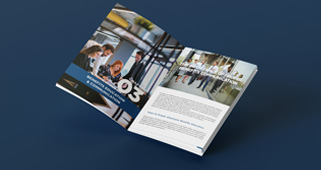Your company’s HR department already understands the importance of effective recruitment and retention in the greater scheme of running a business smoothly. And we all know money talks when it comes to getting and keeping the best talent at your firm. What your company provides its employees in exchange for their hard work and dedication amounts to so much more than a set amount of money for a set amount of time; rather, a competitive firm offers not only a wage or salary, but a range of benefits and perks as well.
What exactly is the difference between perks and benefits? The terms may seem interchangeable to a layperson, but HR professionals armed with a clear understanding of both can create the strongest compensation packages for their team.
What’s the Difference Between Perks and Benefits?
It may be helpful to start with a few examples of each term before dividing “benefits” and “perks” definitionally.
Some examples of benefits are:
-health insurance
-savings toward retirement, like 401K matches
-paid leave, such as sick leave or parental leave
-vacation and holiday time
-life insurance
-long-term disability insurance
Some examples of perks are:
-flexible remote-working options
-employee recognition programs
-incentives for meeting performance goals
-free meals and snacks
-company outings
-gym memberships
Now that you have a clearer picture of where different items fall, let’s define the terms:
Benefits:
The U.S. Department of Labor’s Bureau of Labor Statistics defines benefits as “non-wage compensation provided to employees,” and groups benefits into five categories: paid leave; supplementary pay (premium pay for overtime and work on holidays and weekends, shift differentials, nonproduction bonuses); retirement (defined benefit and defined contribution plans); insurance; and legally required benefits (Social Security and Medicare, Federal and State unemployment insurance taxes, and workers’ compensation).
Perks:
Cambridge Dictionary defines perk as “an advantage or something extra, such as money or goods, that you are given because of your job.”
In other words, benefits are items that employees truly need, items that employees would have to pay out-of-pocket for if it were not for assistance from their employer. Perks, on the other hand, fall more into the category of wants. These are items that employees love and value in the workplace, but that they could technically do without. Going forward, you can think about benefits as necessary, and perks as auxiliary to compensation packages.
Benefits and Perks: The Total Package
Your company should consider the quality of both benefits and perks as a complement to the salary or wages you can provide to your employees.
Benefits objectively attract and retain staff and are often almost as important to your team as their salary expectations. In fact, a 2018 survey revealed that 78% of employees reported being more likely to stay with an employer because of their benefits.
Perks are also valuable; the perks you provide begin to shape the personality of your company, or your company’s culture. Referring back to the list of examples of perks above, you’ll notice they are all items that provide appreciation, a bit of happiness, or even bonding between employees. Often, perks can be experiences, rather than something of intrinsic monetary value. Take volunteer time, for example—a day off of work for employees to donate their time to their favorite community or charitable causes. A day or two of volunteer time each year costs almost nothing but goes a long way toward improving the culture of your company and making employees feel good about their commitment to their business. Company outings are an example of a work perk that create bonding between co-workers, making the company feel more like a community and even bridging the career gap between management and employees. While perks may not seem as essential on paper, they certainly make a difference in overall employee-satisfaction. Afterall, a company’s culture is fundamental to its success, and a workplace that is fun, flexible, and makes one feel valued is much harder to leave!
There are some items that toe the line between perk and benefit, such as employee health and wellness programs and the provision transportation costs, and sometimes there isn’t a need to clearly divide the two groups. The most, important take-away, however, is to understand that employees increasingly value both benefits and perks, and the two come together to make your company the “total package.”
Find Better Benefits with Benely
A one-stop solution for employee benefits will keep you ACA compliant and save you time and money. Contact Benely to request a free demo and learn more about streamlining your benefits process.






